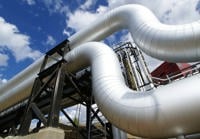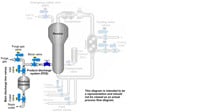Easy on-off valve integration with AS-interface for marine applications
How to answer seagoing concerns with valve communication networking?
Insights ● Blog post
Easy on-off valve integration with AS-interface for marine applications
How to answer seagoing concerns with valve communication networking?
Insights ● Blog post
Guest blog: Gas compressibility factor and control valve sizing
Our guest writer Jon F. Monsen on the theories behind control valves and how to apply that in reality when choosing and sizing control valves.
Insights ● Blog post
Reactive, preventive or predictive?
When it comes to maintenance, which is the right solution for a plant?
Insights ● Blog post
Valves enhance fluidized-bed polymerization: Part 2 – Product discharge system
In this post we continue discussing the polyolefin processing by looking at the product discharge system, piping and valves controlling the flows.
Insights ● Blog postImplementing the Lean model in R&D delivers customer-centric results faster
Neles has been utilizing a Lean management model in production for a long time already.
Insights ● Blog postKnow your installed base like the back of your hand
Honestly, if you don’t know which field devices you have, where they are located and the job they are doing, then how can you expect to improve your equipment and plant reliability?
Insights ● Blog post
3 steps to ensure ESD valve reliability beyond certification
Final elements, such as ESD valves, are a critical part in the safety lifecycle. When they are not working properly, the safety of the entire plant is in jeopardy. To ensure overall plant safety, correct ESD valve selection plays a vital role. A lot of uncertainty prevails around the relatively new standards IEC 61508 and IEC 61511 and how they should be interpreted for safety valves. This blog post looks closer at this issue and sheds some light on what is an essential but confusing subject.
Insights ● Blog postGaining deeper insight to solve valve cavitation
Since cavitation is one of the most significant causes of wear, it is important to control the impact of the fluid flow. Using advanced computational fluid dynamics (CFD) to model cavitation helps you reach quicker, more efficient results and deeper insight for your designs, avoiding any premature failure of your control valves.
Insights ● Blog postHow to choose control valves?
Control valve requirements often differ depending on the process area, application and end user specifications. Process conditions and the range of parameters also vary widely, including pressure, temperature, controllability, cavitation risk, environmental impact, noise and more. Plus, priorities may differ. An end user may want to know more about a valve’s performance, controllability and total life-cycle cost, whereas an EPC contractor may be more concerned about the CAPEX-related costs and delivery times. How do you know where to start – and where to turn for help with quality information you can rely on?
Insights ● Blog postValves in delayed coking units – why they matter
Refineries need to improve profitability to stay competitive in today’s market. Delayed coking for heavy and sour oil refineries is potentially one of the most profitable operations available to refiners. Since 1994, almost all residue upgrading in the US has been done with delayed coking. And although coking technology may seem mature, innovations continue to bring improvements.
Insights ● Blog post